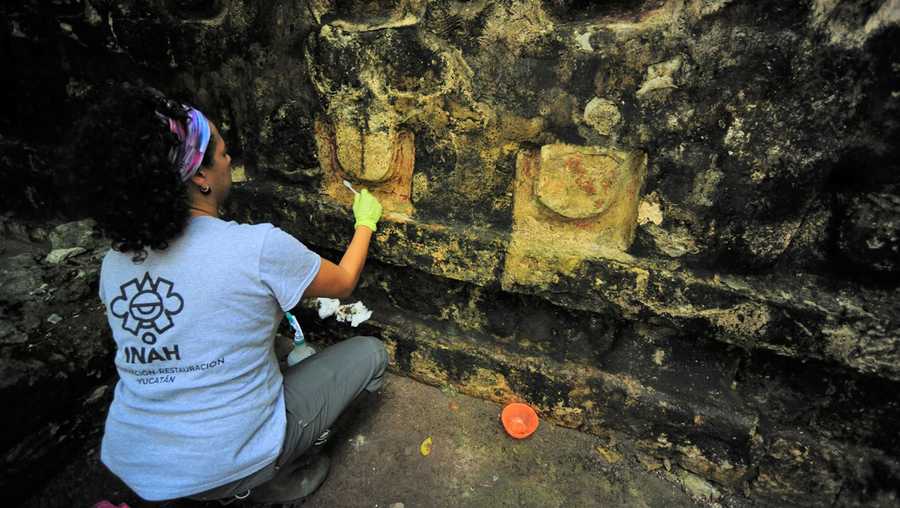Archaeologists in Mexico discover ruins of ancient Mayan palace
A Mayan palace dating back more than 1,000 years was discovered by archaeologists in Mexico.
The ruins were found in the Kuluba archaeological zone in the Mexican state of Yucatán, about 63 miles west of Cancún, Mexico's National Institute of Anthropology and History said.
The building is about 19 feet high, 180 feet long and 49 feet wide, the INAH said.
Experts think the building was used by priests and government officials during two eras of the Mayan civilization.
"This work is the beginning," said archaeologist Alfredo Barrera in a video. "We've barely began uncovering one of the most voluminous structures on the site."
Barrera said his team wants to learn more about how Mayans lived in this southeast area of Mexico. Mexican archaeologists don't know much about that aspect of the civilization.
The INAH said the architecture, ceramic and mural techniques in the palace appear to be similar to those in Chichen Itza, a Mayan settlement in Yucatán that is believed to date back to the 5th century AD. Chichen Itza is a UNESCO World Heritage Site.
In addition to the palace, archeologists discovered a temple, residential buildings and other stone structures, the INAH said.
The Mayans were a Mesoamerican civilization that flourished across Mexico and Central America from 2000 BC to the time of the Spanish conquistadores.
Kuluba, the archaeological site were the palace was found, is not open to the public yet pending more restoration work.


